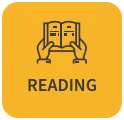
Introduction
Phonics is a crucial component of early literacy instruction. By teaching children the relationship between sounds and letters, phonics builds the foundation for reading and spelling skills. Research has consistently shown that a strong phonics foundation leads to improved reading comprehension and overall literacy success. In this blog post, we will explore effective strategies and engaging activities that can support the development of phonics skills in children.
Strategies for Teaching Phonics
1. Explicit Instruction: When teaching phonics, it is important to be clear and direct in your instruction. Explicitly teach the relationship between letters and sounds, using multisensory techniques such as visual aids, manipulatives, and gestures. Break down words into phonemes and demonstrate how letter combinations produce specific sounds.
2. Systematic Approach: Phonics instruction should follow a systematic and sequential approach. Start with simple letter-sound correspondences and gradually introduce more complex patterns. Build upon previously learned skills and reinforce them through regular practice. This approach allows children to develop a solid phonics foundation and prevents gaps in their understanding.
3. Phonemic Awareness: Before diving into phonics, ensure that students have a strong grasp of phonemic awareness – the ability to identify and manipulate individual sounds in words. Engage students in activities that focus on blending, segmenting, and manipulating phonemes. This will enhance their ability to apply phonics skills in reading and spelling.
4. Integration with Reading and Writing: Phonics instruction should not be isolated from reading and writing activities. Integrate phonics lessons with meaningful reading experiences, allowing students to apply newly acquired skills in context. Encourage them to use phonics knowledge to decode unfamiliar words while reading and to spell words accurately in their writing.
5. Differentiated Instruction: Recognize that students have different learning styles and paces. Differentiate phonics instruction by providing additional support for struggling learners and offering enrichment activities for advanced students. Use a variety of resources, including digital tools, games, and hands-on activities, to cater to diverse learning needs.
Phonics Activities for Success
1. Word Sorting: Provide students with a set of word cards and ask them to sort the words based on specific phonics patterns. For example, students can sort words with long “a” and short “a” sounds into different categories. This activity helps children identify patterns in words and reinforce their understanding of phonics rules.
2. Sight Word Hunt: Create a scavenger hunt activity where students search for sight words in books, newspapers, or around the classroom. Encourage them to read the words aloud and identify the phonics patterns within each sight word. This activity promotes word recognition and reinforces phonics skills in a fun and interactive way.
3. Phonics Board Games: Design or use existing board games that incorporate phonics skills. Students move their game pieces along the board, reading words or completing phonics-related tasks to advance. This engaging activity allows for repetition and practice of phonics skills in a game-based format.
4. Digital Phonics Apps: Utilize educational apps that focus on phonics instruction. There are numerous interactive and engaging apps available that provide opportunities for students to practice phonics skills independently. Look for apps that offer a variety of activities, including word building, phoneme blending, and phonics-based games.
5. Read Alouds and Word Hunts: During read-aloud sessions, emphasize phonics patterns by pointing out words with specific letter-sound relationships. Afterward, challenge students to find additional words with the same patterns in their own reading materials. This activity encourages students to apply their phonics knowledge in authentic contexts and strengthens their decoding skills.
Conclusion
Phonics instruction plays a vital role in boosting literacy skills. By implementing effective strategies and engaging activities, teachers can help students develop a strong foundation in phonics, leading to improved reading and spelling abilities. Remember to provide explicit instruction, follow a systematic approach, integrate phonics with reading and writing, differentiate instruction, and offer a variety of stimulating activities. With
these strategies and activities, students will be well on their way to phonics success and enhanced literacy skills.
Looking for some awesome Phonics resources to use?
Check out some of workbooks available on our website or sign up for a Chalkboard Teach membership and choose from hundreds of different Phonics worksheets!
Follow us on Instagram and Facebook to keep up to date with Chalkboard!









